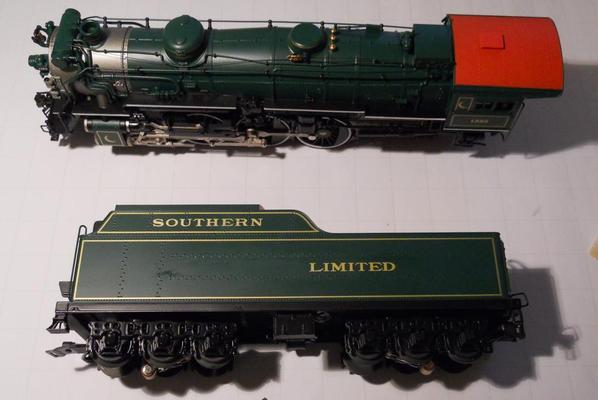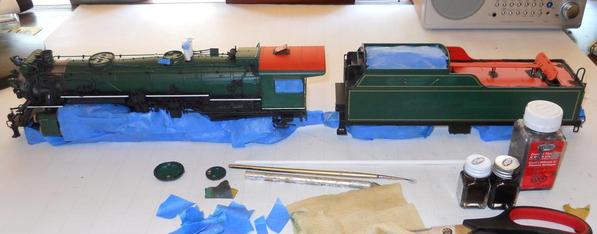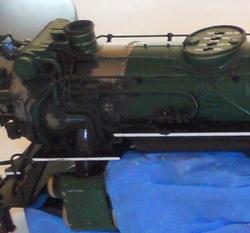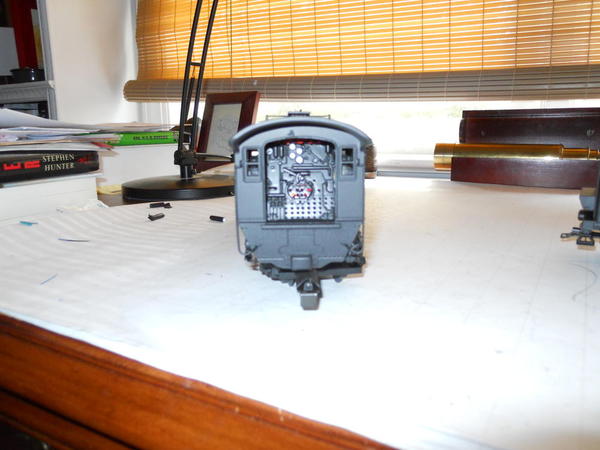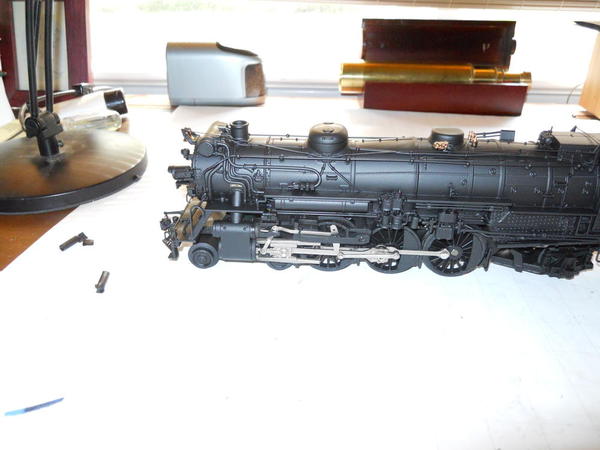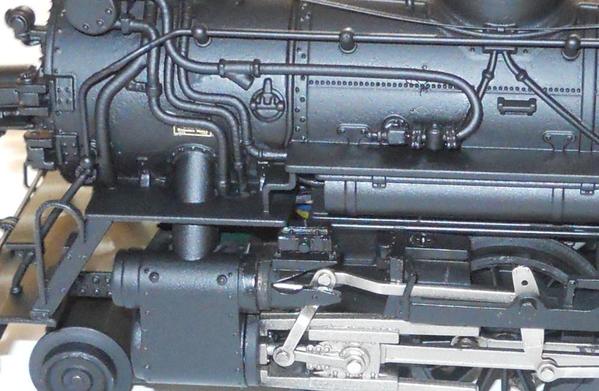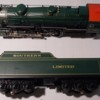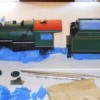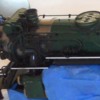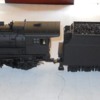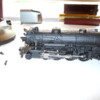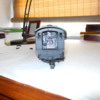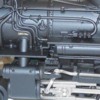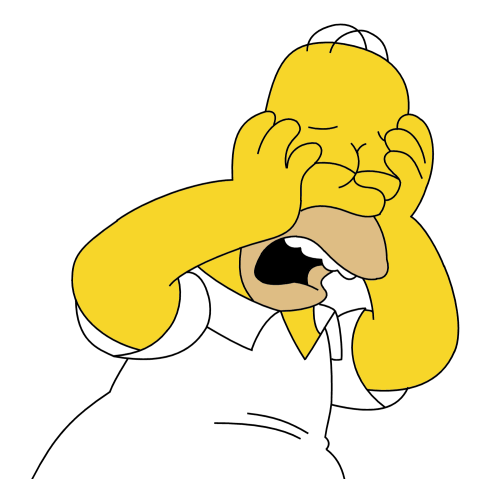As I mentioned in a couple of the Southern Crescent threads, I bought mine because I loved the piping and machinery attached (particularly on the front end), but I don't do Southern on my layout, and while many love the beautify of the paint scheme, it was too garrish for me.
I bought this intending to repaint it flat black, and I have . . . without removing the body or priming. Here are the pictures.
Step 1 was to test the paint with a small trial spray onderneath the tender and let it dry overnight - to make sure ti does not react with the paint, etc.
Next is to sand off the printing, etc. with # 600 sandpaper: it has enough dimension that you can see it through paint so it must be removed. This took only 15 minutes.
TWO HOURS I then spend on masking the loco EVERYWHERE I don't want even a spray of paint to go.
I mask and trim the number plates, and even the manufacturer's plates, etc. The bell is a challenge
to mask, but I got it done. IF YOU DO THIS: remember, mask the IR link REALLY well - any paint on that
could ruin your whole day.
Next, I use a fine brush to paint everywhere I think "spray shadows" might
occur - under pipes, backside of pipes and equipment. This took an hour. Below shows
some details, above you can see I've done it everywhere.
Immediately after finished the manual painting, I spray it. Two coats 20 minutes apart: the first is semi-gloss, the second flat, black. I do not use an airbrush - can't move enough paint in a short time. I use Rustoleum Painter's Touch Ultra Cover spray paint cans bought at Ace Hardware.
Four hours later the paint is nicely dried, if not yet absolutely hardened. I remove the masking, spend thirty minutes hand painting the wheels rims flat black, etc.
Here it is - really looks nice!
Note that spending half an hour masking the inside of the windows, too, and the cab with a
tape curtain paint off with a perfect interior - no spray.
And this is what I wanted when I bought the loco: all that piping and machinery, on an hard-working industrial loco. Grand!
AND THE ONLY THING THING THAT WENT WRONG? It surprised me. I masked all three of the tiny brass "manufacturer's plates" -- cover them with masking tape, trim it with a #11 Xacto blade. Five or six hours later, when I carefully removed the tape, two or the tiny brass plates came with it. No big deal. I glued them back on. Below is the one that stayed on, but the other two look just as good now they are reattached.




